Details behind HoloMem’s holographic tape innovations are beginning to come into clearer view. The UK-based startup recently chatted with Blocks & Files about its potentially disruptive technology for long-term cold storage. HoloMem is another emerging storage idea which relies on optical technology - to enable holographic storage. However, it cleverly melds the durability and density advantage of optical formats with a flexible polymer ribbon-loaded cartridge, so it can usurp entrenched LTO magnetic tape storage systems with minimal friction.
HoloMem key claims
According to the inventors of HoloMem, their new cold storage technology offers far greater capacity than magnetic tape, with a much longer shelf life, and “zero energy storage” costs. HoloMem carts can fit up to 200TB, which is more than 11x the capacity of LTO-10 magnetic tape. Also, the optical-based new tech’s touted 50-year life is 10x the life of magnetic tape.
Magnetic tape has been around for 70 years or more, so it isn’t surprising that a new technology has at last been designed as a serious replacement, beating it by all key metrics. However, the HoloMem makers have revealed quite a few more attractive features of their new storage solution, which could or should lead to success.
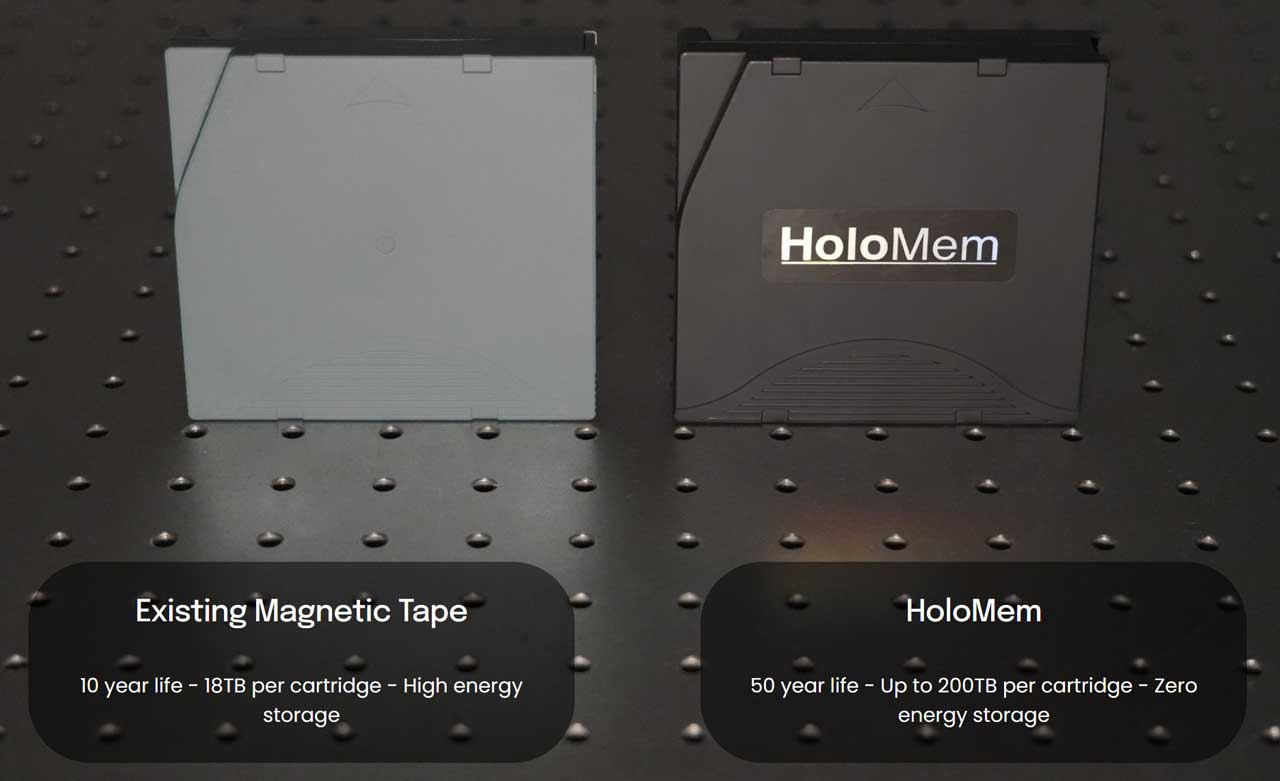
HoloDrive attractions
Probably one of the biggest attractions of HoloMem is that it minimizes friction for users who may be interested in replacing existing tape storage. The firm claims that a HoloDrive can be integrated into a legacy cold storage system “with minimal hardware and software disruption.” This allows potential customers to phase-in HoloMem use, reducing the chance of abrupt transition issues. Moreover, its LTO-sized cartridges can be transported by a storage library’s robot transporters with no change.
Another feather in HoloMem’s cap is the technology’s reliance on cheap and off-the-shelf component products. Blocks & Files says that the holographic read/write head is just a $5 laser diode, for example. As for media, it makes use of mass-produced polymer sheets which sandwich a 16 micron thick light-sensitive polymer that “costs buttons.” The optical ribbon tapes produced, claimed to be robust and around 120 microns thick in total, work in a WORM (write-once, read-many) format.
Thanks to the storage density that the multiple layers of holograms written on these ribbons enable, HoloMem tapes need only be around 100m long for 200TB of storage. Contrast that with the 1,000m length of fragile magnetic tape that enables LTO-10’s up to 18TB capacity.
Blocks & Files shares some insight gained from talking to HoloMem founder Charlie Gale, who earned his stripes at Dyson, working on products like robot vacuum cleaners and hair dryers. During his time at Dyson, Gale helped devise the firm’s multi-hologram security sticker labels. This work appears to have planted the seed from which HoloMem has blossomed.
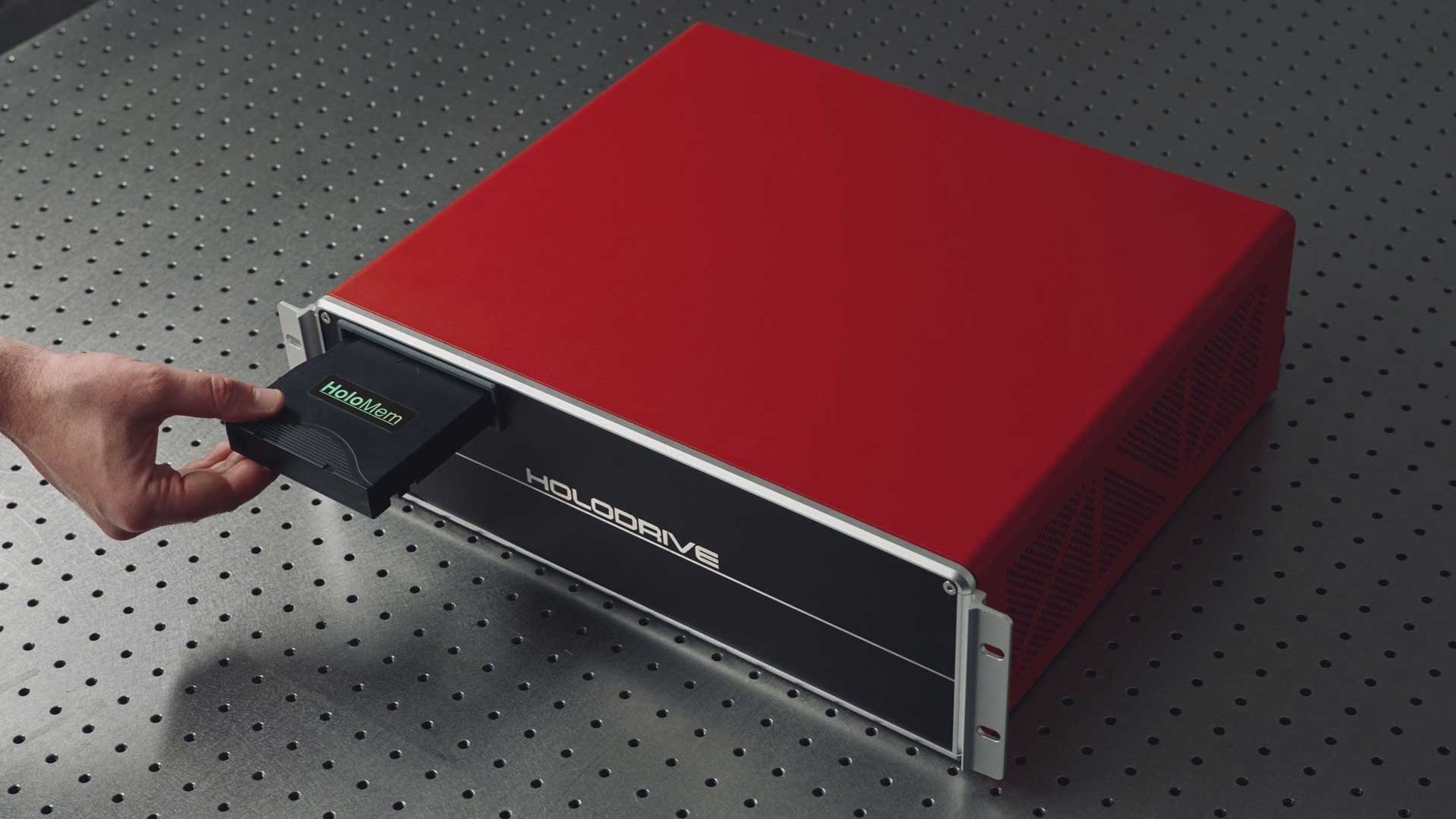
Rivals? Cerabyte and Microsoft Project Silica
Rival would-be optical storage revolutionaries like Cerabyte or Microsoft’s Project Silica may face far greater friction for widespread adoption, we feel. Their systems require more expensive read/write hardware to work with their inflexible slivers of silica glass, and will find it harder to deliver such easy swap-out upgrades versus companies buying into HoloDrives.
HoloMem has a working prototype now and is backed by notable investors such as Intel Ignite and Innovate UK. However, there is no official ‘launch date’ set. Blocks & Files says the first HoloDrives will be used at TechRe consultants, in its UK data centers to verify product performance, reliability, and robustness.
Follow Tom's Hardware on Google News to get our up-to-date news, analysis, and reviews in your feeds. Make sure to click the Follow button.

 4 months ago
68
4 months ago
68
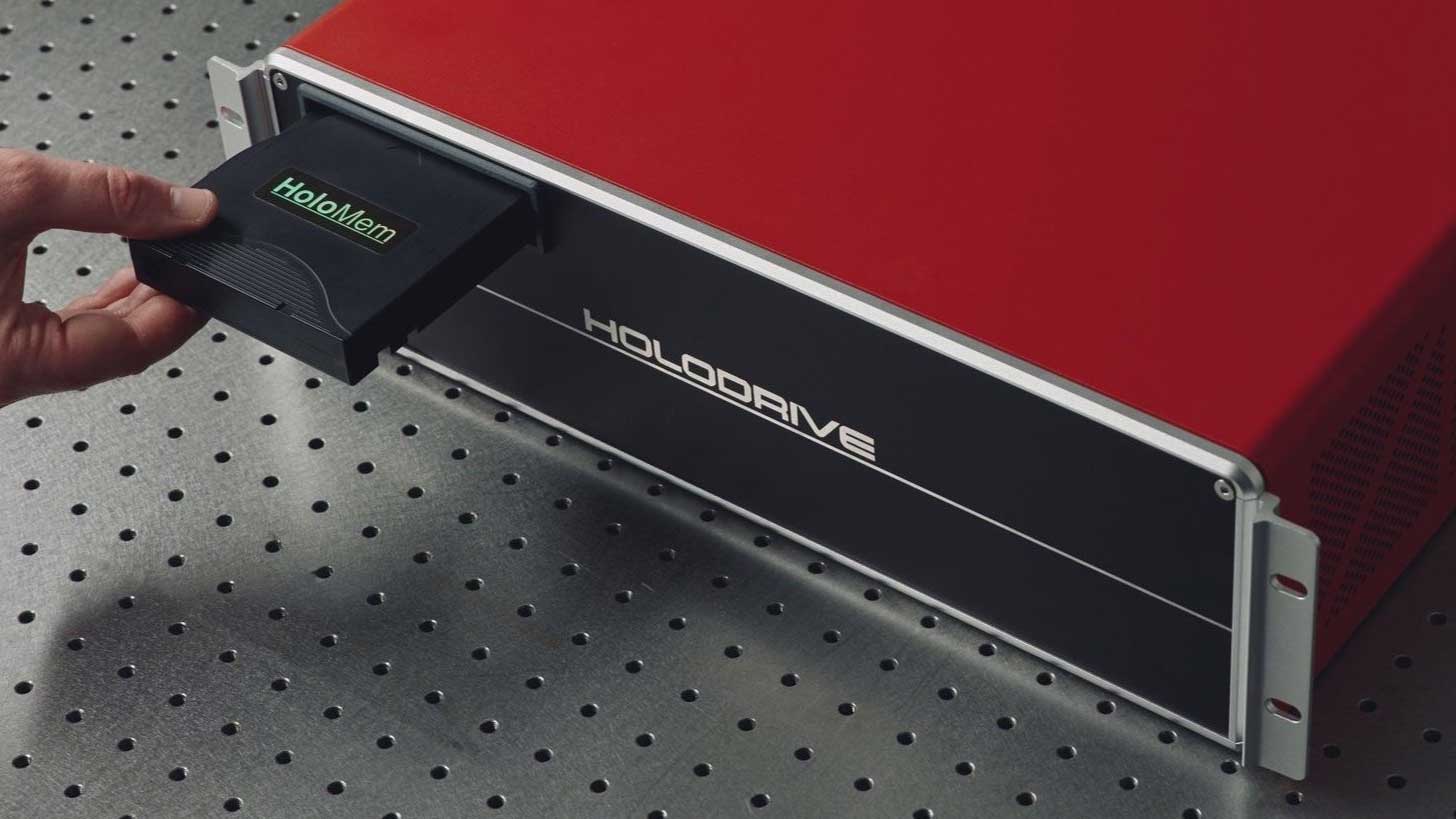
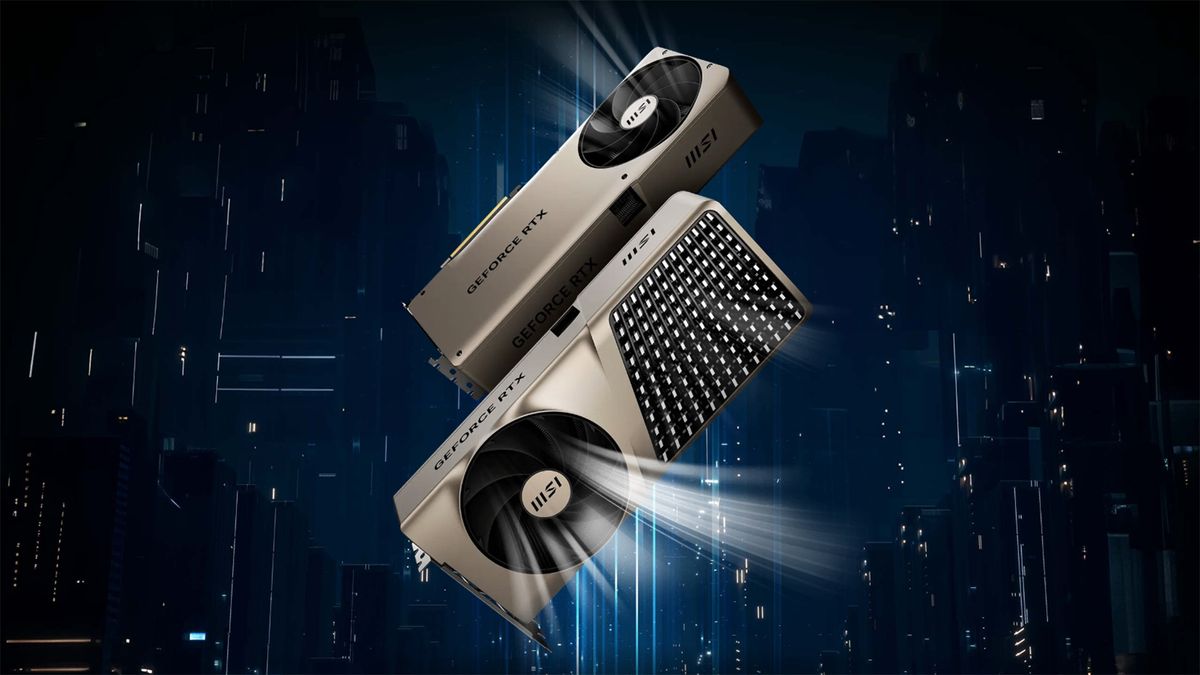
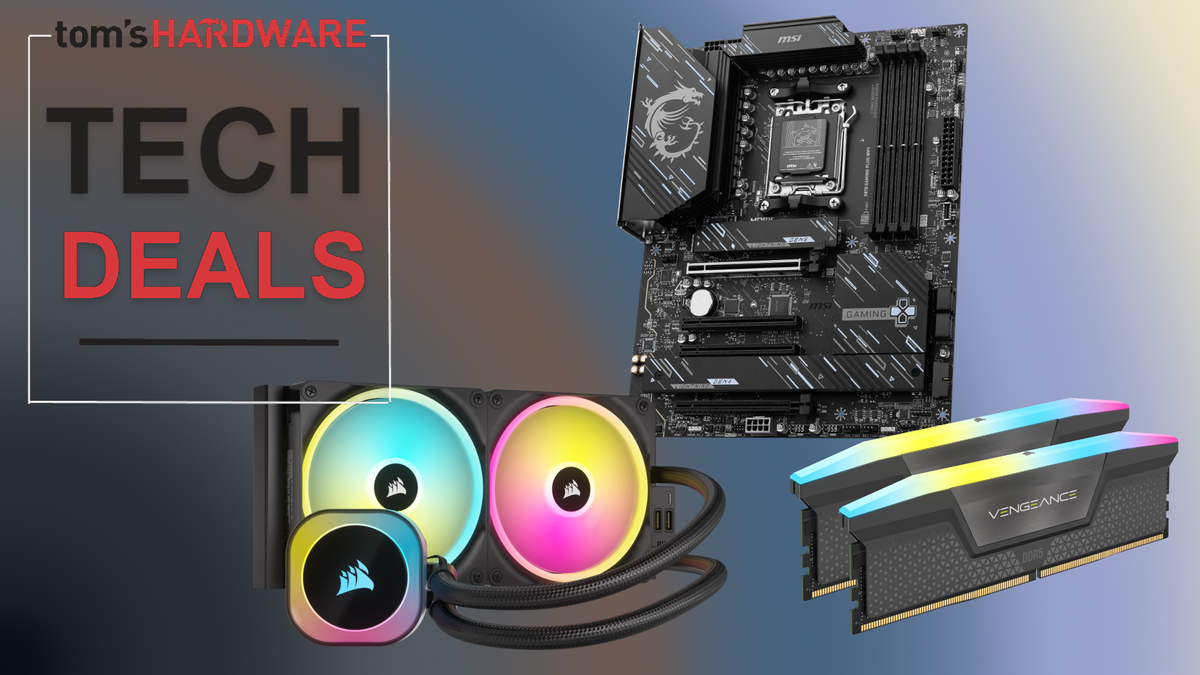
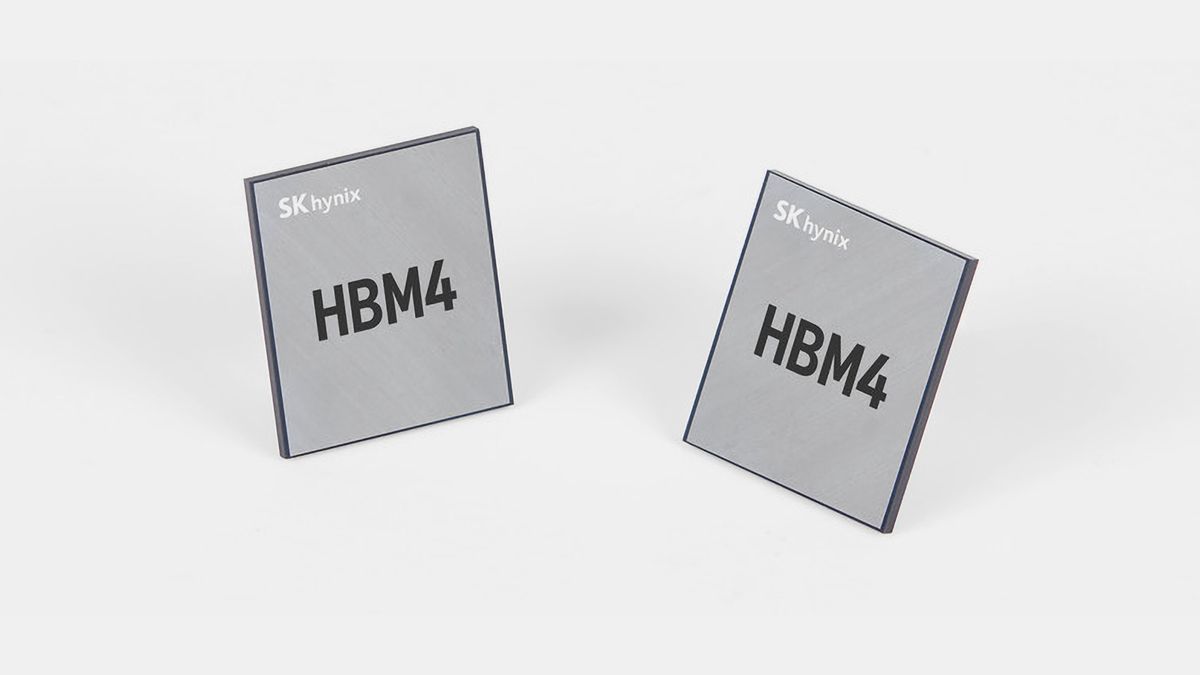


 English (US) ·
English (US) ·